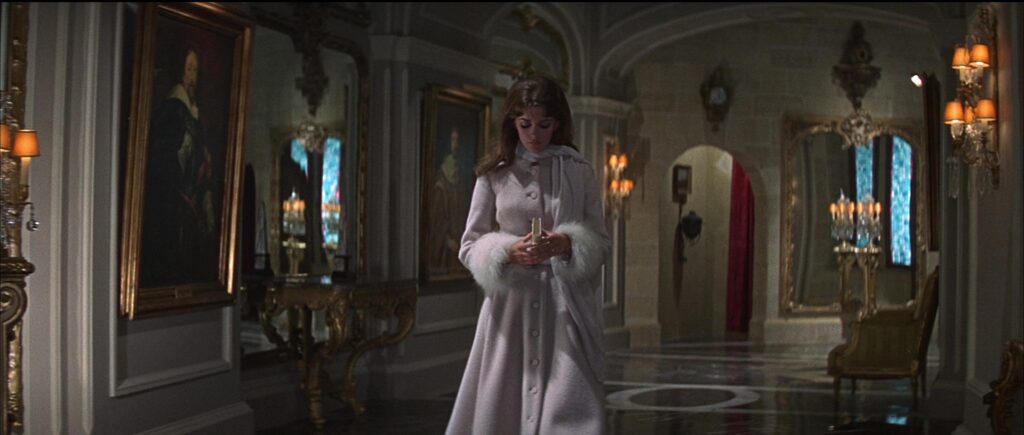
Actor Burt Lancaster first met Sydney Pollack on the set of John Frankenheimer’s The Young Savages (1961) where Pollack was employed as an acting coach for the teenaged cast members. Lancaster, impressed by Pollack, sought the director to helm his controversial western The Scalphunters (1968) as well as to direct some pick-up shots for The Swimmer (1968). By the time Pollack directed Lancaster in The Scalphunters Lancaster was already keen to have him direct the film adaptation of William Eastlake’s anti-war novel Castle Keep. It would take Lancaster and Pollack three years to get their film made and released, but in the summer of 1969 Castle Keep exploded on screens.
Eastlake’s novel is a fantastic rendering of his own experiences in WWII with a clear anti-war message. Pollack, a masterful director of actors, never truly rose to the occasion of creating a fantasy inspired epic. Although Castle Keep contains the most breathtaking images of Pollack’s career, these images feel scattered and disconnected from the story of an American squad of soldiers stationed in a tenth century castle. Pollack’s film is divided between those images that have an aesthetic correlation with the fine art that populates the mise en scène of the castle interiors and those images whose only purpose is to drive the plot.
The dreamy, often surreal images that have been inspired by the European masters reiterate one of the central themes of Castle Keep which is the effect that war has on culture. This element of the film seems to have been the most dear to Pollack who finds a surrogate in the art historian character of Cpt. Beckman (Patrick O’Neal). The film supposes that the castle and the aristocracy who reside there are the “keepers” of Europe’s cultural heritage and that war, by eliminating these “keepers”, will destroy that legacy. As the film presents this concept it’s relatively problematic since neither Pollack nor Eastlake seems confident in the people’s ability to redistribute the duties of these entitled “keepers”.
Lancaster’s Major Falconer represents the total opposite in an ironic twist on the central theme of his film The Train (1964). Falconer represents the cold and ruthless war machine as the ultimate destructive force. Falconer systematically dismantles all that is orderly around him from the Countess’ (Astrid Heeren in her debut) marriage to his squad and ultimately the castle itself. Lancaster loved to play the villain and he sinks his teeth into the Falconer role with relish. But as part of this polemical debate in Caste Keep Falconer lacks the nuance allowed the arguments of the Beckman character.
When Castle Keep isn’t invested in the legacy and value of art it’s a film of Mad Magazine styled episodes complete with characters of less than two dimensions. The ensemble cast (which includes Peter Falk, Bruce Dern, and Scott Wilson) is excellent and far outstrip the mediocrity of the screenplay. The anti-war sentiments and the ideas behind these comedic adventures are, at a basic level, interesting they just don’t feel as articulate or as relevant as M*A*S*H (1970) would prove to be. The execution of the humor in Castle Keep is merely behind the times and probably would have made for a bigger commercial hit if the film were made some ten years earlier.
